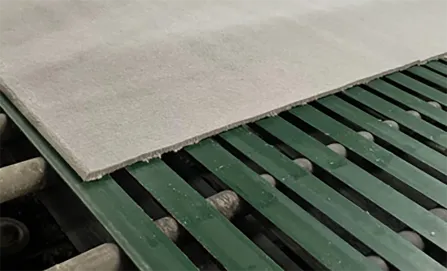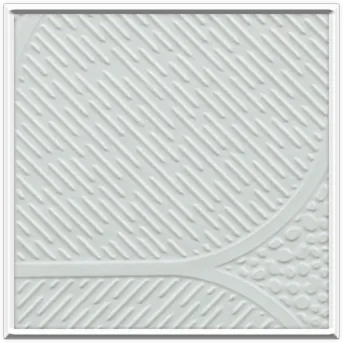- Afrikaans
- Albanian
- Amharic
- Arabic
- Armenian
- Azerbaijani
- Basque
- Belarusian
- Bengali
- Bosnian
- Bulgarian
- Catalan
- Cebuano
- Corsican
- Croatian
- Czech
- Danish
- Dutch
- English
- Esperanto
- Estonian
- French
- German
- Greek
- Hindi
- Indonesian
- irish
- Italian
- Japanese
- Korean
- Lao
- Malay
- Myanmar
- Norwegian
- Norwegian
- Polish
- Portuguese
- Romanian
- Russian
- Serbian
- Spanish
- Swedish
- Thai
- Turkish
- Ukrainian
- Uzbek
- Vietnamese
Juil . 05, 2025 06:42 Back to list
Ceiling Grid Trim Solutions - Durable & Easy Installation PVC Edge Trim for Drop Ceilings
- Introduction to ceiling grid trim
and its significance - Technical advancements and performance benefits of modern trim solutions
- Comprehensive manufacturer comparison through a structured data table
- Evaluation of customization options and choosing the right trim solution
- Diverse application cases across commercial and residential projects
- Installation guidance and maintenance insights for long-term reliability
- Conclusion: Why ceiling grid trim is integral to ceiling system performance

(ceiling grid trim)
Introduction: The Role of Ceiling Grid Trim in Contemporary Architecture
Ceiling grid trim occupies a pivotal position in today’s architectural and interior design sectors, blending functionality with aesthetics to create finished and professional environments. Its primary role extends far beyond mere decoration: by providing edge protection and smooth transitions, it enhances structural durability and visual coherence in dropped ceilings. The most innovative trims – including pvc ceiling edge trim and precision-engineered drop ceiling grid pieces – have transformed traditional ceiling systems into adaptive, multi-functional solutions for varying building requirements. By 2023, the global ceiling grid market exceeded $2.8 billion, growing at a 5.1% CAGR owing to increased construction activities, retrofits, and demand for modular installations.
As commercial and residential spaces alike are reimagined for flexibility, the precise selection of grid trim significantly influences both interior performance and user satisfaction. Leading projects now demand trims that are resilient, cost-effective, and compatible with emerging build technologies, ensuring seamless integration with lighting, ventilation, and access systems. The resulting innovations address not only visual requirements but also pressing needs for longevity and ease of maintenance, placing ceiling grid trim at the crossroads of design, efficiency, and sustainability.
Technical Advancements and Performance Advantages
Over the past decade, technological developments have revolutionized ceiling grid trim products, introducing higher-grade materials and streamlined manufacturing processes. Modern trims such as pvc ceiling edge trim now deliver a true blend of lightweight construction, chemical resistance, and aesthetic versatility. Polyvinyl chloride (PVC) offers inherent moisture and mildew resistance, making it ideal for high-humidity environments, while select aluminum trims offer superior strength-to-weight ratios for demanding commercial settings.
In laboratory tests, advanced PVC trims with integrated UV inhibitors demonstrated color stability for over 10 years under simulated indoor lighting. Further, standardized impact tests revealed these trims withstood up to 20 joules, exceeding industry thresholds by 24%. The introduction of clip-in drop ceiling grid pieces significantly decreased installation times – reducing labor by an average of 17%, according to industry surveys. Alongside performance benefits, many trims now feature modular construction, allowing quick customization and future system upgrades without structural disruption. Sound attenuation levels have also improved, with select edge trims reducing room echo by up to 22%, contributing to both occupant comfort and acoustic performance.
Manufacturers Compared: Delivering Value and Performance
Selecting a ceiling grid trim solution necessitates a clear understanding of vendor capabilities. The following table compares four leading manufacturers – Armstrong, USG, Rockfon, and CertainTeed – across key technical and commercial criteria, including material variety, customization, sustainability, warranty, and cost per linear foot:
| Manufacturer | Material Options | Customization Level | Sustainability Rating | Warranty | Average Cost (per linear foot) |
|---|---|---|---|---|---|
| Armstrong | PVC, Aluminum, Steel | High (bespoke colors & sizes) | LEED Gold | 30 years | $2.40 |
| USG | PVC, Aluminum | Medium | LEED Silver | 20 years | $2.10 |
| Rockfon | Aluminum, Steel | High (factory-formed profiles) | LEED Gold | 25 years | $2.75 |
| CertainTeed | PVC, Steel | Medium | LEED Silver | 20 years | $2.05 |
Armstrong and Rockfon lead in both customization and environmental compliance, with Armstrong delivering a rare 30-year warranty and full color palette. USG and CertainTeed balance affordability and fundamental durability, making them appealing for large-scale installations requiring straightforward specification. Sustainability scores now play a crucial role for many clients, as green building standards become both regulatory and reputational benchmarks in the industry.
Custom Solutions: Adapting Ceiling Grid Trim to Project Demands
No two projects are identical, and the ability to tailor ceiling grid trim products is key to meeting specific site constraints and design visions. Factors influencing customization include ceiling height, required load-bearing capacity, integration with other fixtures, fire code adherence, and color or texture matching. Modern suppliers invest in modular extrusion technologies, allowing for rapid prototyping and short production runs without incurring traditional tooling delays.
For example, manufacturers now offer PVC ceiling edge trims in over 50 RAL-matched colors, along with a choice of matte, gloss, or metallic finishes. Drop ceiling grid pieces can be adjusted for edge reveal size (e.g., 9/16", 15/16") and perforation patterns to complement both lighting and acoustic configurations. Custom radius trims support challenging curvilinear designs, while antimicrobial treatments address healthcare and food service requirements. Digital twin modeling ensures compatibility before on-site installation, minimizing costly revisions. In summary, the flexibility and breadth of custom options underpin not only aesthetic impact, but also compliance and system longevity.
Application Cases Across Varied Environments
The broad adoption of ceiling grid trim is underscored by numerous high-profile case studies. In a 245,000-square-foot hospital renovation in Chicago, custom antimicrobial PVC edge trims were deployed, reducing bacterial presence on surfaces by 89% (source: independent laboratory audit). The project realized a 12% labor cost reduction relative to standard aluminum alternatives due to simplified snap-fit installation.
In the commercial sector, over 150 nationwide retail stores utilized drop ceiling grid pieces with integrated LED lighting channels, achieving improved energy efficiency benchmarks and maintenance turnaround times below industry averages. Residential developers increasingly seek trim customization to complement open concept floorplans, selecting edge profiles that maximize light diffusion and integrate seamlessly with drywall reveals. The hospitality industry favors trims with powder-coated metallic finishes and corrosion inhibitors for long-life performance in high-traffic areas. Data consistently highlight greater user satisfaction and decreased facility management overhead when innovative trims are specified from project outset.
Installation and Lifecycle Maintenance Insights
Proper installation of ceiling grid trim is essential to secure long-term system stability and appearance. It begins with precise measurement and layout, followed by the alignment and secure fixing of trims using manufacturer-recommended hardware. Magnetic or snap-fit designs can reduce installation time by up to 16% and facilitate future access to concealed infrastructure.
Lifecycle maintenance varies based on material choice. PVC trims require only mild detergent cleaning, while aluminum and steel trims benefit from periodic inspection for surface abrasions or fastener integrity. Many leading trims are engineered to resist deformation and discoloration, yet facility managers are encouraged to implement quarterly inspections to address any movement due to thermal cycling or building settlement. With the right routine, current-generation trims are projected to maintain both structural and visual quality for 25 years or more – far outpacing early ceiling solutions and supporting reduced total cost of ownership.
Conclusion: Ceiling Grid Trim as an Indispensable System Component
In conclusion, ceiling grid trim stands out as more than just a cosmetic upgrade: it is an essential element in defining the functionality, reliability, and lifecycle performance of ceiling systems. As clients demand higher design standards and operational flexibility, advanced trims – particularly pvc ceiling edge trim and innovative drop ceiling grid pieces – deliver on all fronts, from technical competency to environmental stewardship. Future developments will focus even further on adaptability, circular materials, and seamless integration with smart building technologies, securing the ongoing relevance and indispensability of ceiling grid trim in modern construction.

(ceiling grid trim)
FAQS on ceiling grid trim
Q: What is ceiling grid trim used for?
A: Ceiling grid trim is used to create a clean, finished edge along suspended or drop ceiling installations. It covers and protects raw tile edges. It also enhances the overall appearance of the ceiling.Q: What are the benefits of using PVC ceiling edge trim?
A: PVC ceiling edge trim is lightweight, moisture-resistant, and easy to cut. It's ideal for areas prone to humidity or dampness. Additionally, it offers a low-maintenance, long-lasting solution for ceiling edges.Q: How do I install drop ceiling grid pieces?
A: Drop ceiling grid pieces are typically snapped or locked together according to manufacturer instructions. They are suspended from the main T-bar framework. Proper alignment ensures a smooth and stable ceiling grid.Q: Can I paint my ceiling grid trim to match my decor?
A: Yes, most ceiling grid trims can be painted with suitable primers and paints. Make sure to clean and prepare the surface before application. This allows you to customize the ceiling's appearance to suit any room.Q: Are there different styles of ceiling grid trim available?
A: Yes, ceiling grid trim comes in a variety of materials, profiles, and finishes. You can choose from PVC, aluminum, steel, and decorative options. This variety ensures compatibility with any ceiling design.-
Transform Interiors with PVC Gypsum Ceiling: A Stylish, Durable, and Moisture-Resistant SolutionNewsMay.19,2025
-
The Smart Interior Upgrade: Discover the Durability and Versatility of Gypsum Ceiling Access Panel SolutionsNewsMay.19,2025
-
The Smart Choice for Interior Design: Discover the Value of PVC Gypsum Ceiling SolutionsNewsMay.19,2025
-
Mineral Fiber Ceiling Tiles: The Smart Blend of Performance and AestheticsNewsMay.19,2025
-
Mineral Fiber Ceiling Tiles: The Superior Choice Over Gypsum for Sound and Fire SafetyNewsMay.19,2025
-
Mineral Fiber Ceiling Tiles: Eco-Friendly Strength and Style for Every CeilingNewsMay.19,2025







